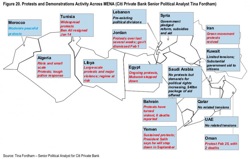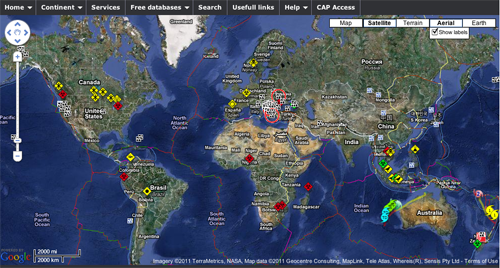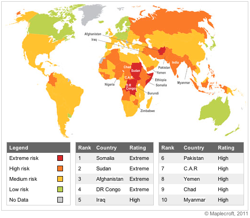Every few seconds this morning, TweetDeck brings another comment on today's announcement that Salesforce.com is buying Radian6. The announcement's not exactly a surprise—Radian6 was the obvious acquisition target in social media analysis (SMA), and their platform had supported Salesforce integration since mid-2009. The price ($340 million in cash and stock, including retention bonuses for the founders) is larger than expected, but overall, it's a logical deal that surprises no one.
Blogging about the day's big news is sort of obvious, so I'll focus on the question I haven't seen raised yet: what does the Radian6 acquisition mean to the other companies in social media analysis? A few thoughts for discussion:
- Radian6 just took a big step toward solidifying its position as the standard.
Radian6 was already the company most likely to be mentioned in any discussion of social media monitoring (note the careful use of the term). The Salesforce endorsement makes them the default choice for 92,000 Salesforce customers. Competitors need more than a me-too monitoring platform to win. - Aquisitions say something about the segmentation of social media analysis.
The Radian6 deal says a lot about interest in social CRM, or the integration of social media monitoring and customer relationship management. Other acquisitions have tied SMA firms to PR/media (Sysomos/Marketwire, Brandtology/Media Monitors), market research (Cymfony/TNS, Umbria/JD Power, Evolve24/Maritz), and marketing management (Techrigy/Alterian). SMA is a feature set that can work into multiple categories; look for SMA companies to focus their feature sets on specific use cases, and expect acquisitions that work into acquirer's existing businesses. - Enterprise software has noticed social media analysis.
Salesforce joins SAS in making a serious move to tie social media analysis to nuts-and-bolts business operations. Social business software companies Jive and Lithium have picked up their own listening platforms. Any acquisitions or product announcements by IBM, Oracle, and SAP should be completely expected, but pay attention to the emerging distinctions between social media analytics and social media monitoring (see #2). - Obvious acquisition candidates are getting harder to find.
Despite the presence of 300+ companies in the space, only a handful of the product leaders are still independent companies. Radian6 is easily the most recognized name in SMA, so most of the remaining independents are not widely known. Looking back to my report on social media analysis platforms for workgroups (March 2010), six of the 21 companies have been bought in the last year.
I don't think there's one obvious candidate for the next acquisition, and in any case, any deal has to start with specific goals (just like any purchase). If it's not already obvious, the many companies in SMA are not the same. The differences in what they do and why is what makes the space so interesting. I know you want the list, though, so here's a quick reaction on who I might look at:
- Attentio, Brandwatch, Sentiment Metrics and Synthesio don't usually come up in the social media conversation in the US, but they all have solid SMA platforms.
- Converseon blurs the lines that divide research, creative marketing, and management consulting services. They drive me crazy because they're always working out the same things I am. Nobody else does the one-stop social media shop like they do.
- Visible Technologies has unique capabilities in managing the response component in social media monitoring, as well as a nicely designed interface for working with solid analytics capabilities.
Disclosure: Radian6 is paying my way to their user conference next week. I consult with companies (usually buyers) on partnerships and acquisitions in social media analysis, but I do not represent the companies listed here.
Related:
 Judging from the way people are talking about it, social media analysis is segmenting into at least three subspecialties. As usual, we're using multiple labels that occasionally overlap, so the potential for miscommunication is great. Whatever the utility of any one approach, companies need a
Judging from the way people are talking about it, social media analysis is segmenting into at least three subspecialties. As usual, we're using multiple labels that occasionally overlap, so the potential for miscommunication is great. Whatever the utility of any one approach, companies need a 


